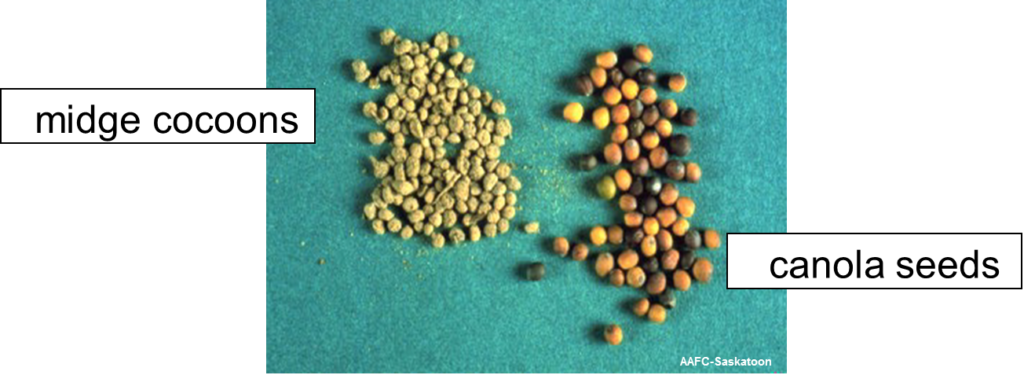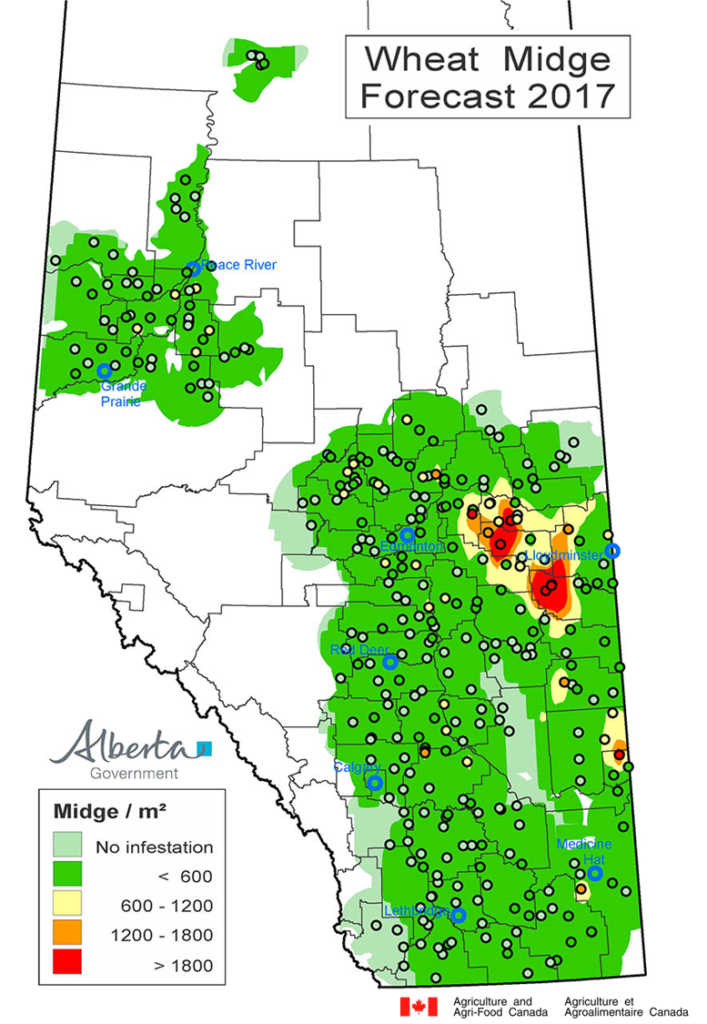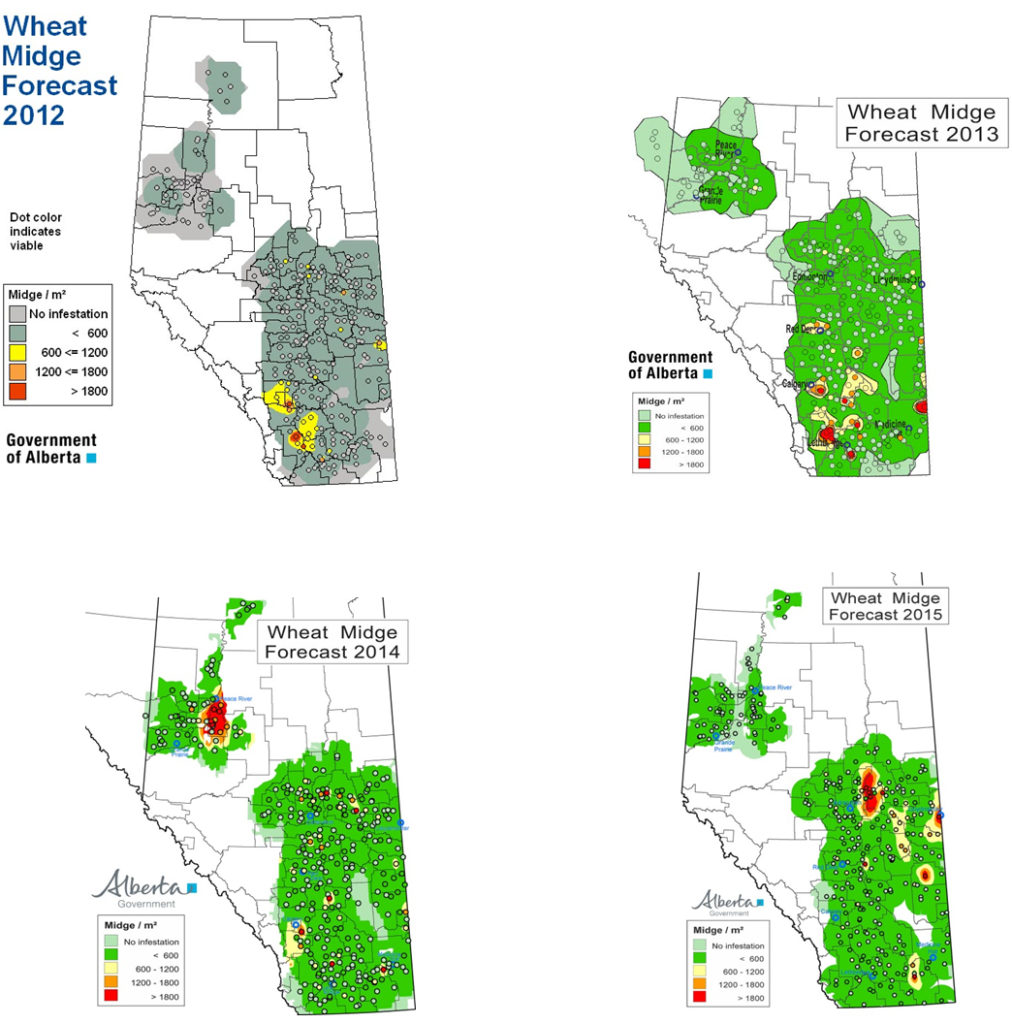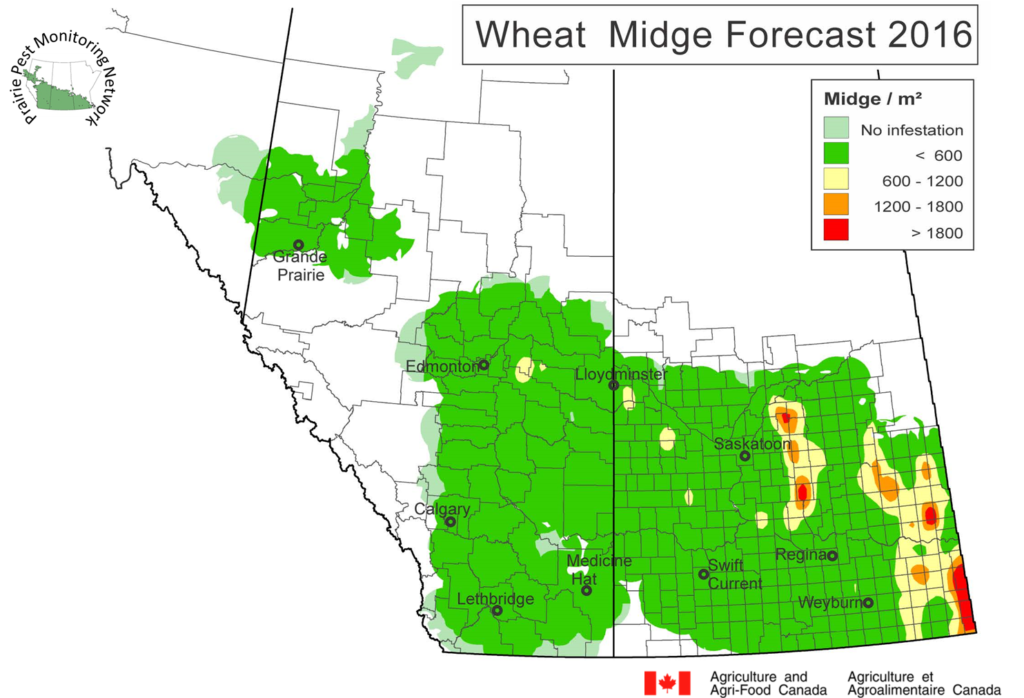Each fall, soil core sampling is carried out across the Canadian prairies to assess wheat midge densities and parasitism levels of the overwintering cocoon stage. Soil collected from wheat fields is collected then the samples are washed to retrieve the tiny cocoons, each measuring only ~2-3mm in diameter (Fig. 1).
 |
| Figure 1. Wheat midge cocoon sizes (L) compared to canola seed (R). |
After washing, each cocoon is carefully dissected under the microscope to determine if a parasitoid larva has attacked the wheat midge larval host. The densities of the cocoons, and the percent parasitism by the biological control agents (Macroglenes penetrans, Platygaster sp., Euxestonotus error), are compiled and used to generate the geospatial forecast map below.
The Albertan 2017 wheat midge forecast is posted below (Fig. 2) and you can review previous maps for that province further down the page. Be sure to review Alberta Agriculture & Forestry’s full wheat midge forecast map posting and how they conduct their survey by linking here.
 |
| Figure 2. Alberta wheat midge forecast map for 2017. |
Additional information related to wheat midge biology and monitoring can be accessed by linking to your provincial fact sheet (Saskatchewan Agriculture or Alberta Agriculture & Forestry). A review of wheat midge on the Canadian prairies was published by Elliott, Olfert, and Hartley in 2011.
More information about Wheat midge can be found by accessing the pages from the new “Field Crop and Forage Pests and their Natural Enemies in Western Canada: Identification and Field Guide”. View ONLY the Wheat midge pages but remember the guide is available as a free downloadable document as both an English-enhanced or French-enhanced version.


